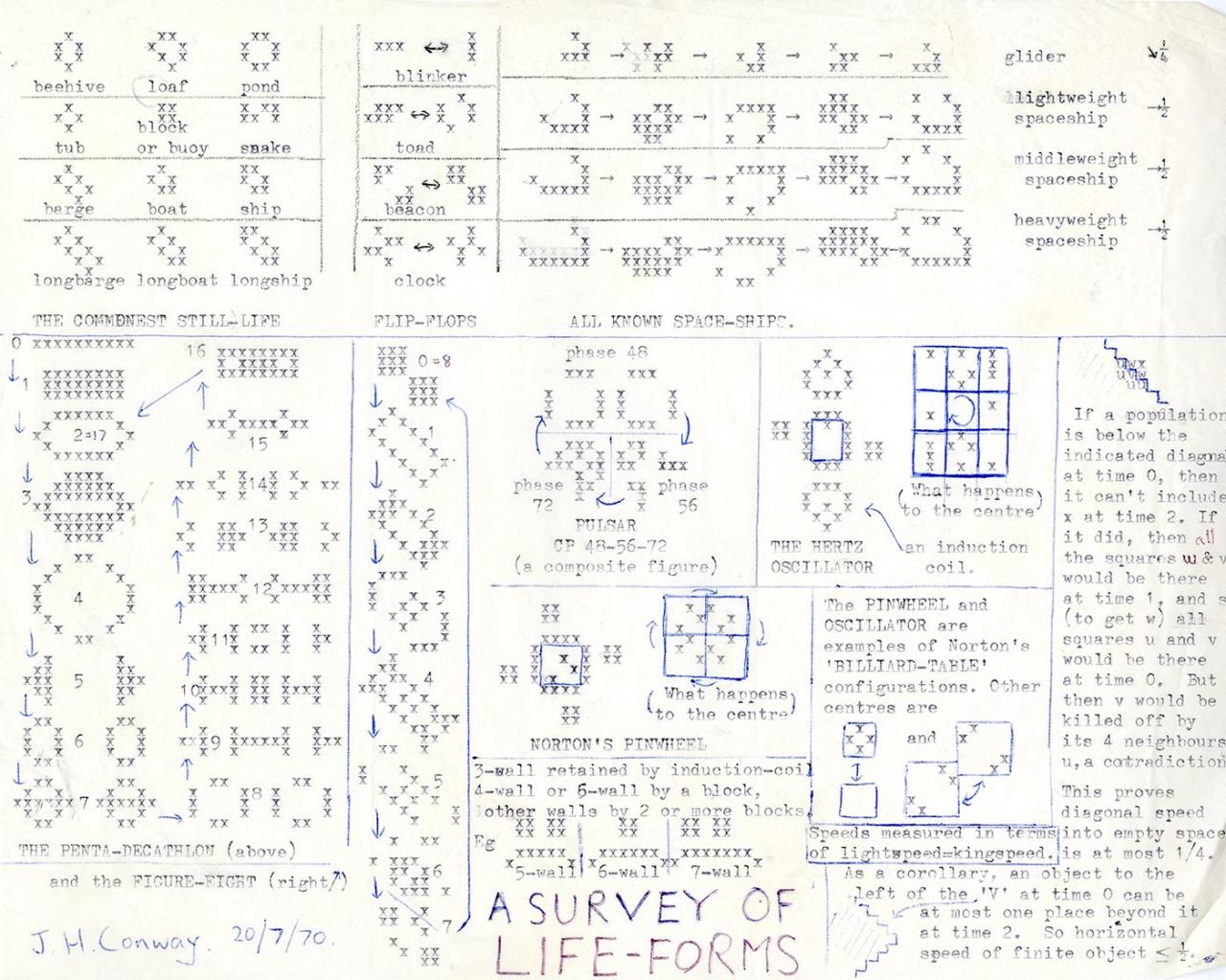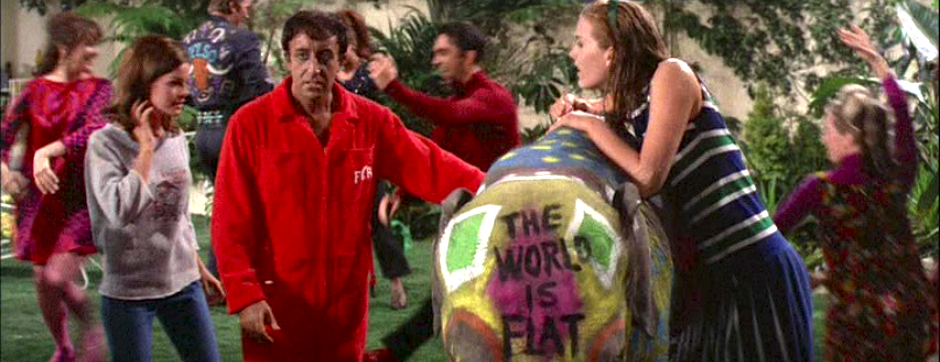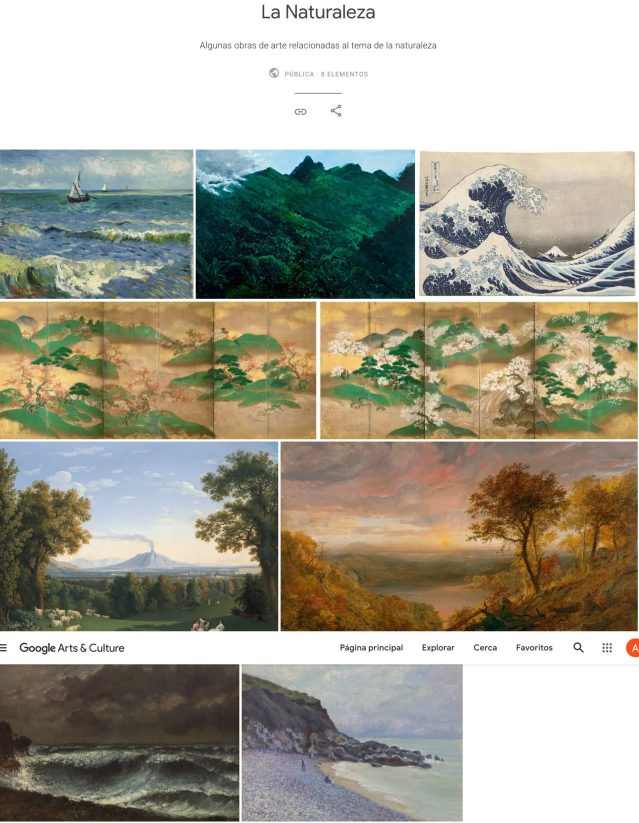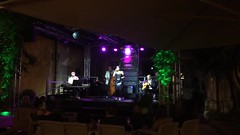Two episodes describe the magic that happens when you get inspired by something and rush to work on an imitation process—on something that you want to go after. Such episodes may change your life. In my case, there are two episodes plus one.
First—John Conway, the mathemagician of Cambridge and Princeton, has died recently. This NYTimes articles helped me remember how fond I was of him.
Travels With John Conway, in 258 Septillion Dimensions: The Princeton mathemagician, who died in April, left an engaging legacy of numerical gamesmanship. https://www.nytimes.com/2020/05/16/science/john-conway-math.html
I remember when, fresh instructor of computer science, I inspired students by the same inspiration of his ideas, reframed by Martin Gardner and others (including Douglas Hofstadter). His ideas were weird automata that played according to a simple set of rules: the Game of Life. In a board, a set of dots propagate and reproduce according to a simple few rules of proximity. The fascination is enchanting. This way on cannot but fall in love with computing. And that was my practical introduction to automata, Turing machines, and self-replicating creatures. That was also the first time I got introduced to John Von Neumann’s genius: he was the guy who first had the glimpse that artificial stuff could reproduce by themselves. Imagine viruses without that principle. So, I inspired tens of students on those apparently pointless exercises to program automata that showed beautiful compositions on the board!
And there I was hooked to math and computing!

This is how Martin Gardner presented his friend’s Game of Life (a cellular automaton) in his SciAm column (The fantastic combinations of John Conway’s new solitaire game ‘life’, October 1970)
“Because of its analogies with the rise, fall and alterations of a society of living organisms, it belongs to a growing class of what are called ‘simulation games’ – games that resemble real-life processes. To play Life without a computer you need a fairly large checkerboard and a plentiful supply of flat counters of two colors.”
Mulcahy, C. (2014, October 21). The top 10 Martin Gardner Scientific American articles. Scientific American Blog Network. https://blogs.scientificamerican.com/guest-blog/the-top-10-martin-gardner-scientific-american-articles/
Here are the rules for the Game of Life:

And here is where one can play The Game of Life: https://playgameoflife.com/
I played a couple of examples from the site, then screen-recorded the plays with the faithful Quicktime. At last I uploaded the mov file to https://convertio.co, which then gave me these two brilliant GIFs. I could stare at the symmetries and patterns forming for hours.


Then there’s the Sprouts game, which can be played on a piece of paper with just two players. Here’s an image of a possible game. People tell that at Princeton, when Conway proposed first the game, everybody, including secretarial staff, became addicted to it!

Play the game here https://chrissmith2.github.io/Sprouts-Game/! Instructions and info here: https://github.com/ChrisSmith2/Sprouts-Game
How to Play
Start out by placing 2 or more dots anywhere on the page (click to place dots). The game is played turn by turn with two players. Each turn must follow the rules below.
Turn Rules
- First, a player draws a line from one dot to another or from one dot back to itself (click and hold to draw a line).
- Lines can be curved or straight but cannot cross another line or themselves.
- After drawing a new line, a dot must be placed somewhere on that line.
- No dot can have more than 3 lines coming from it or going to it
The winner of Sprouts is the last person able to draw a line. One game of mine, recorded and rendered as a GIF (I played against myself):
Second— I experienced my second moment of huge inspiration in two steps. My two friends Mario Núñez and Jim Groom are responsible. Jim had just given a brilliant and inspiring talk http://www.vidadigital.net/blog/2009/05/11/video-de-la-presentacin-de-jim-groom-la-revolucin-no-se-televisar-se-sindicar/) at Mario’s Blogfesores congress in Mayagüez, Puerto Rico (it was 2009, and I wrote about it here https://blogs.netedu.info/2009/03/25/blogfesores-2009-78-mayo-09/). That was enough, but later he gave a workshop in syndication through WordPress and a magic plugin, Feed WordPress. The plugin would allow to subscribe to a number of syndicated RSS feeds and include their content in one’s own blog content. Wow. A universe opened up in front of me. That was when I started to copy whatever Jim ever invented or transformed. The point here is not so much to talk about his work, though, but instead of the inspiration, dream and magic that work injected in me (and many others).

Both example here suggest a mentoring component. In fact, I continued doing copycat business after them, and I keep on to this day doing almost every class of mine with a syndication-based technology and methodology—of connection and openness.

There’s a third part in all this, and that is when Mario and I coincided with social bookmarking (both loved del.icio.us –RIP–): Mario has also had a huge mentoring effect on me. One night, after a workshop he gave, he began talking of a tv series he was hooked with. It was Dexter.
Of course, Mario is a psychologist of the Jungian school, so guess what, the shadow in Dexter’s story was immensely attractive to him. But he managed to infect me with that same passion, and I got hooked too. Those were the times of the new golden age of tv that was starting up with gorgeous, well-scripted and greatly shot series. I began my tv series addition at that time. Forbrydelsen (the original The Killing), Homeland, and all the following up to Breaking Bad and Borgen, Peaky Blinders and the surreal Ozark.

Well, last but not least, I have a powerful mechanics of following people I admire. So my choices, education and all were biased throughout the lenses of my own perception of such people’s examples. This article could well be an excuse to talk about authentic learning, but it is really only on the imitation game. That is a very powerful way to inspire people to education.
I am leaving you with the trailer of Forbrydelsen, even if I already have published it on this blog.














